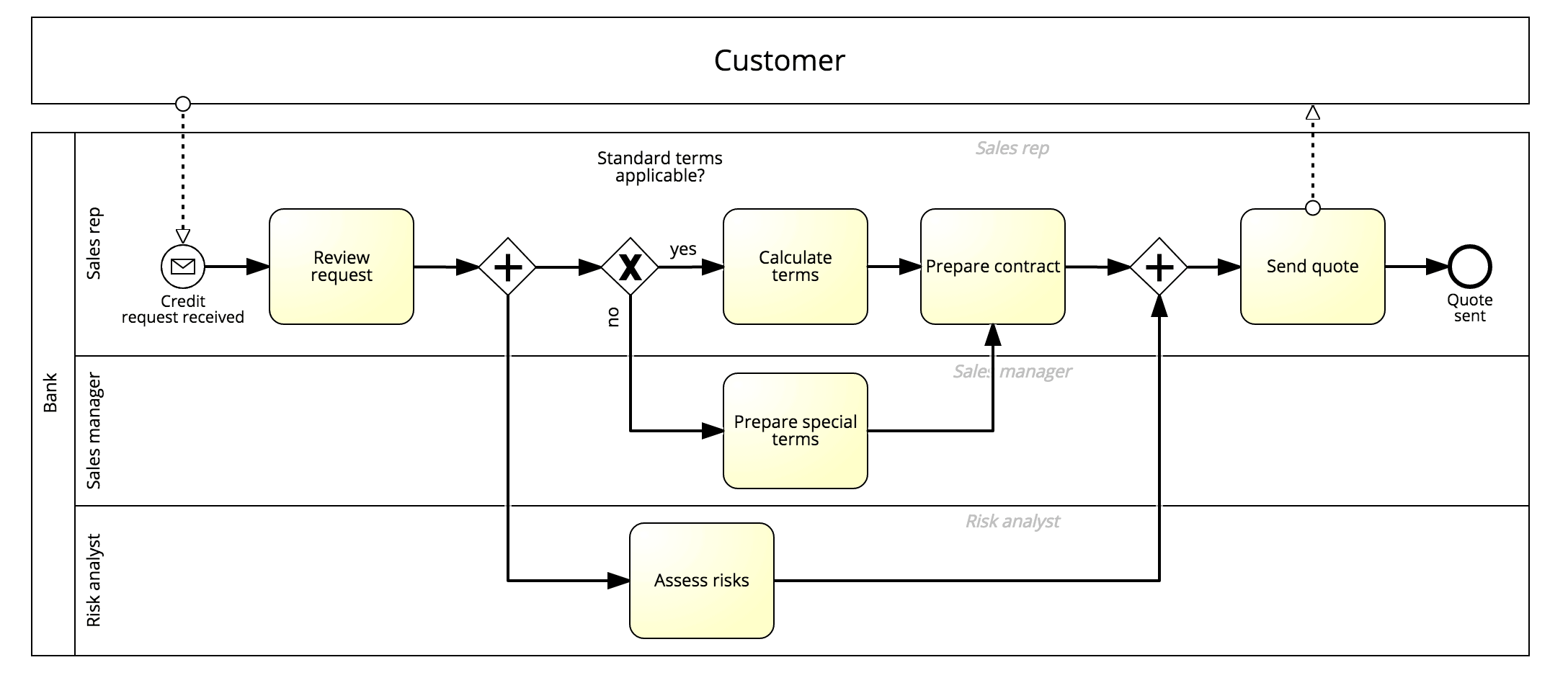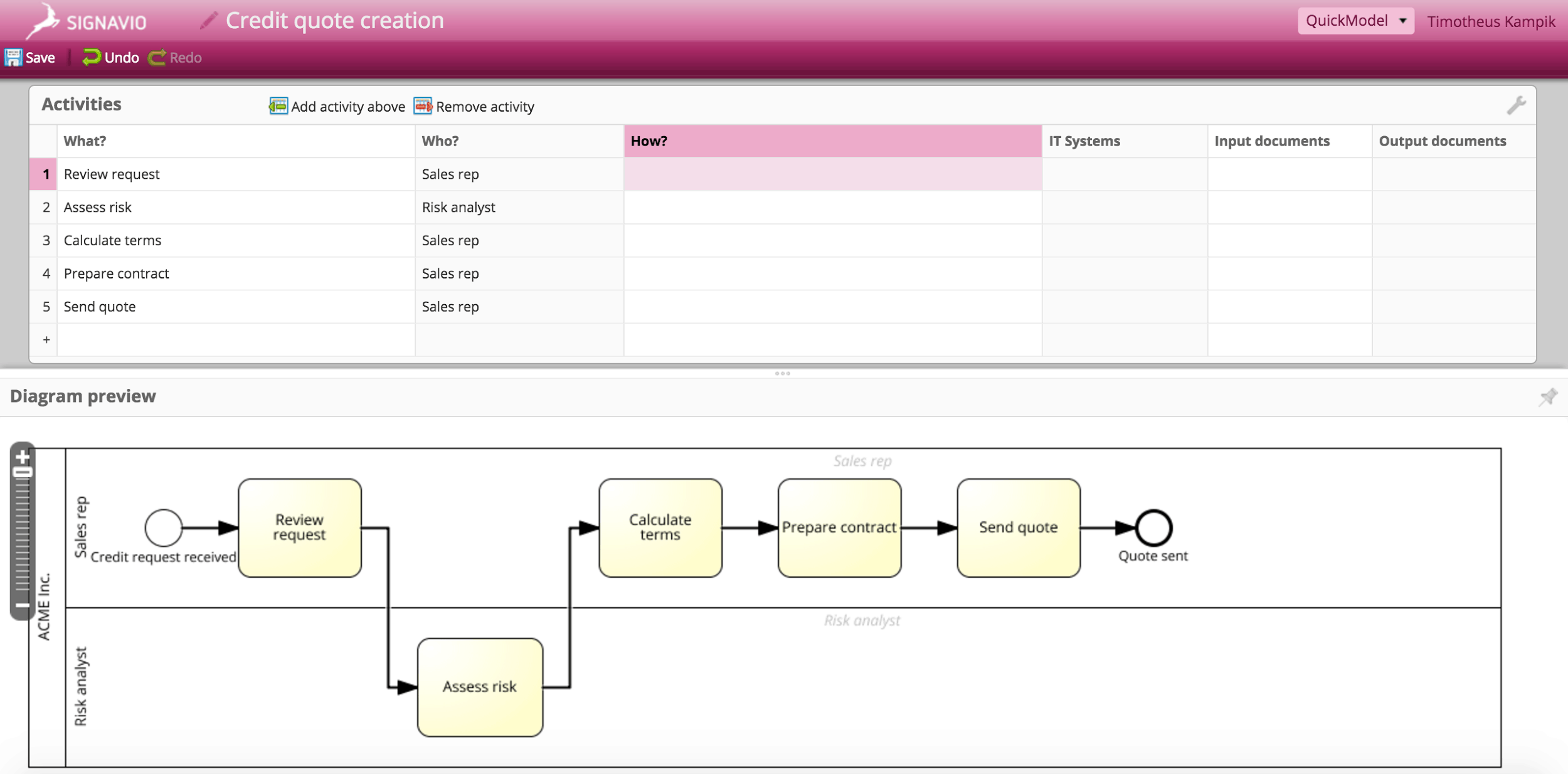As BPM practitioners, we have to remind ourselves that most people use information technology only for a set of intuitive or routinely repeated tasks. The BPM QuickModel is part of the SAP Signavio Process Manager and allows users to insert process details via a spreadsheet-like interface. Based on the inserted data, the app generates a BPMN model in real-time.
Let’s take a look at a credit quote creation process.
To ensure the process is actually representing reality, a group of sales representatives is asked to document the process. The sales reps are accustomed to working with Microsoft Excel spreadsheets, and they figure out how to use the BPM QuickModel in no time. To kick-off the documentation session, the sales reps are asked to model the typical activity sequence of the process - the so-called Happy Path - not considering exceptions or escalation.
By focusing on the two most basic questions - ‘What?’ and ‘Who?’ we avoid both the ‘blank canvas syndrome,’ as well as overly complex diagrams. Though the BPM QuickModel has limitations (you cannot model Gateways and Intermediate Events), it ensures the basics are in place before details are discussed.
Now, the sales reps can add further textual explanations (in the ‘How’ column) and define deviations from the Happy Path.
To reflect the textual descriptions in the explanation, a business analyst can now refactor the process, ideally in collaboration with the department’s subject matter experts. Afterwards, the process could, for example, contain Gateways to reflect parallelism and conditions, an additional Pool representing a customer or another Lane for a role that handles escalated cases.

Pro tip
The BPM QuickModel is not only a tool to involve people without BPMN knowledge in the creation of your process landscape. It can also help seasoned BPMN modelers to speed up the modeling process. Especially when specific attributes have to be maintained, it’s convenient to navigate the attribute values in QuickModel’s spreadsheet view, where they are available at a glance. Try BPM QuickModel now for free by registering for our 30-day free trial.

